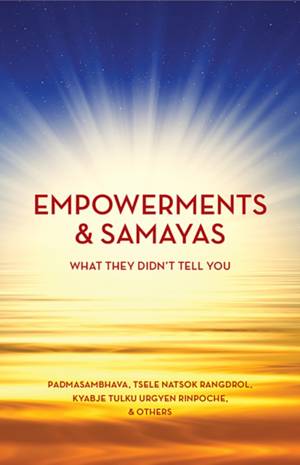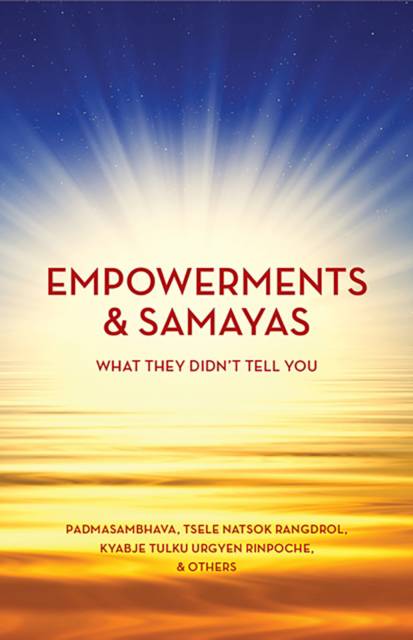
- Afhalen na 1 uur in een winkel met voorraad
- Gratis thuislevering in België vanaf € 30
- Ruim aanbod met 7 miljoen producten
- Afhalen na 1 uur in een winkel met voorraad
- Gratis thuislevering in België vanaf € 30
- Ruim aanbod met 7 miljoen producten
Empowerment & Samaya
Padmasambhava, Tsele Natsok Rangdrol, Kyabje Tulku Urgyen RinpocheOmschrijving
Samaya is the dirtiest word in Vajrayana Buddhism.
The incorrect assumptions about samayas are used as weapons to threaten people and intimidate students, to instill fear in their hearts. Instead of being properly educated about this complex commitment, the subject is left unaddressed, whispered. There is samaya in the context of empowerment but also samaya means more. Samaya has to do with how we relate to our teacher, to the teachings, and to our Dharma friends. Basically, it's a road map for our conduct and eventual realization.
Entering the Vajrayana Path, occasionally, our guides let us move blindly. They don't want to talk about Samaya. Some think that if they reveal the truth, the students will run away.
This is not a modern day problem, Tsele Natsok Rangdröl addressed it in the 17th Century:
Obviously, the vital point of empowerment is to receive the blessings so that original wakefulness dawns in our being... In these times, [17th Century] questions regarding the nature of the empowerment, the way to implement it in practical experience, and the points of the samaya commitments, etc., are left behind on the pages of books, and masters as well as disciples do as they please and what feels most enjoyable.
Be uninformed no more! This book, Empowerment and Samaya, clearly lays out every aspect of the profundity of both samaya and empowerment. Herein are detailed explanations, traditionally and in modern language about these profound topics on many levels. There are clarifications about all aspects of empowerment, lists of many of the samayas, how to keep and ways to mend, when broken.
Specificaties
Betrokkenen
- Auteur(s):
- Uitgeverij:
Inhoud
- Aantal bladzijden:
- 240
- Taal:
- Engels
Eigenschappen
- Productcode (EAN):
- 9781735734552
- Verschijningsdatum:
- 17/09/2024
- Uitvoering:
- Paperback
- Formaat:
- Trade paperback (VS)
- Afmetingen:
- 137 mm x 213 mm
- Gewicht:
- 294 g

Alleen bij Standaard Boekhandel
Beoordelingen
We publiceren alleen reviews die voldoen aan de voorwaarden voor reviews. Bekijk onze voorwaarden voor reviews.











